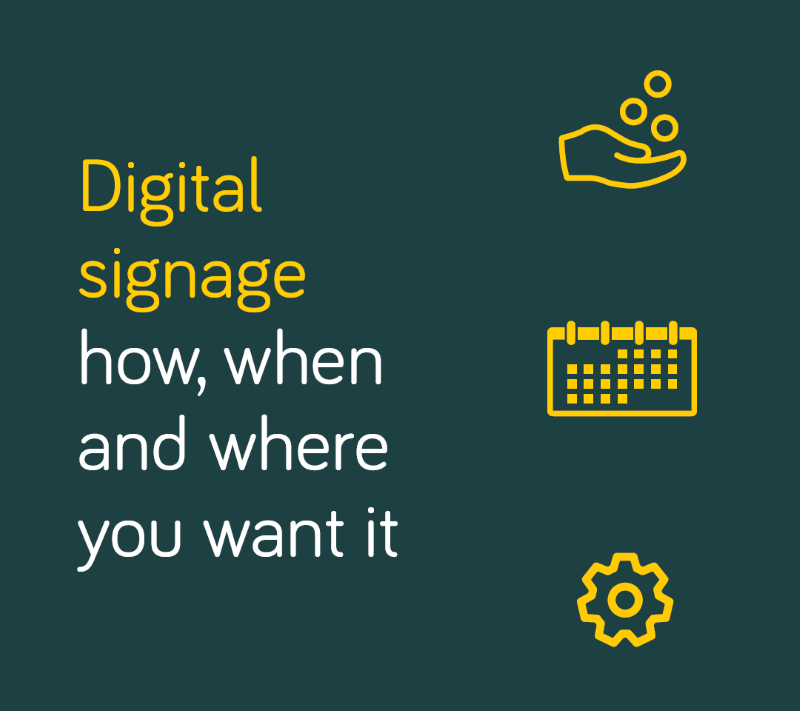LiveSpace digital signage – Technical Information

Introduction
LiveSpace is an information display system based on MRG’s experience of working within the betting industry to provide real time display systems capable of providing live updates to thousands of screens. LiveSpace is based on a centralised server providing HTML data to client screens in many locations over the internet. It uses the latest web technologies to ensure that updates are rapidly transmitted to every screen while minimising the network traffic and therefore the bandwidth required at each location. The user interfaces to control all aspects of LiveSpace operation are written as web pages that interact with the core system processes and the administration interface provides a full set of features while still capable of being operated using a tablet or even a mobile phone. One particular feature of the way that LiveSpace has been built is the ability to easily create control interfaces. These provide the ability to control the features shown on a particular template, including the ability to update any data fields without the complication of using the full user interface. As the control interface is another web page written in HTML it is possible to easily tailor the display to make it as easy to operate as possible.
Technical Features
Admin interface
The user interface provided for the control of the system requires a user name and password before users are allowed access.
The admin interface has been designed to work well on either a standard PC desktop, a tablet or even the browser on a mobile phone.
With the admin interface users can;
- Add and remove client screens
- Add and remove pages
- Create and edit carousels of pages
- Schedule pages or carousels to be displayed on a screen
- Select a page or carousel to be displayed immediately.
- Monitor the status of connected clients.
Live Data
To add live data into LiveSpace a data connector is required. This is a process that either polls for data or receives it as a feed from another source and then stores it in the LiveSpace database as data objects. When new data arrives the system checks it against the existing data and only sends updates to those screens whose content has been affected. This not only minimises the traffic on the network but also increases performance as changes are published immediately.
Data Shapers
It’s possible within the system to have more than one template displaying data from the same source but in a different way by using a control interface to select and sort the data. To provide this functionality a “data shaper” is created which takes the original data and creates a manipulated version to be stored separately. When data updates are received any derived objects created in this way are tested so that templates using the derived data also get updated if required.
Client screens
An installation normally consists of a Mini-PC supplied by MRG driving a TV screen or monitor. The size and resolution of the screen depends on the requirements of the installation and can be provided by the customer or supplied by MRG. We would recommend that for most installations the resolution should be at least HD (1920 x 1080) but the system also supports 4K screens (3840 x 2160) which are becoming available at reasonable prices and provide a much better image. Each client PC is loaded with MRG LiveSpace Client software and runs a web browser to generate the display on the screen. In order to manage connections and verify their authenticity the software generates a unique hardware code that is transmitted to the central site when it first connects. It can then be authorised and added to the list of connected clients. This unique code is used by the system to identify each client and control the content of the display.
Local Selection
When a playlist is selected for display the normal operation is for each page to be displayed in turn.
An option exists, however, for the displayed page to be selected locally using an infrared remote control or a keyboard.
This could allow a local operator to select the offer best suited to the local area from a menu of national offers for instance, or could be used to select different views of the available information in an office context.
Local Overrides
By creating a control interface that can be accessed via a unique username and password a local operator can have more control over their display, or potentially a group of displays. This gives the local user the option to override the contents of one of the data objects in the database. The local data is combined with the rest of the template to provide the final page to be displayed. Uses could include:-
- Setting a local price for a special offer
- Changing the name of the local manager in a playlist of information pages
- Advertising a local winner of a competition.
Other types of override have been identified and are scheduled for future development.
Grouping
This is a feature we developed some time ago and is built into several of our products. Systems operating within extensive retail estates or large organisations need to define their screens in a multitude of different ways. For example they may be defined by geographic location, department, size of the store or the capability of the hardware employed on site etc. Any combination of these will ensure screens are managed properly and campaigns are fine tuned to the audience.